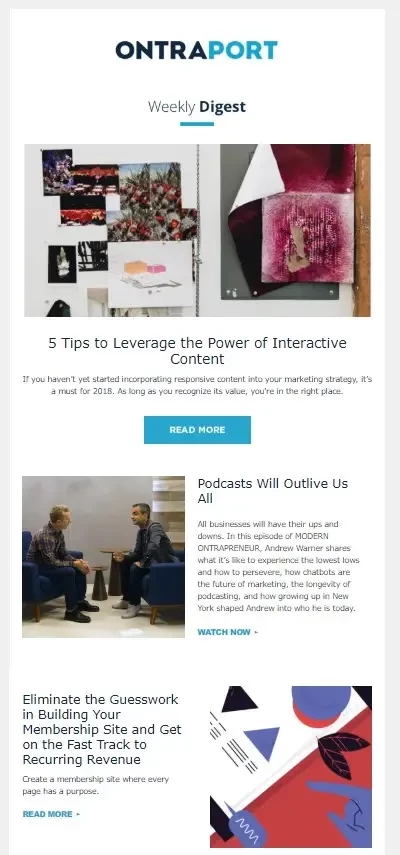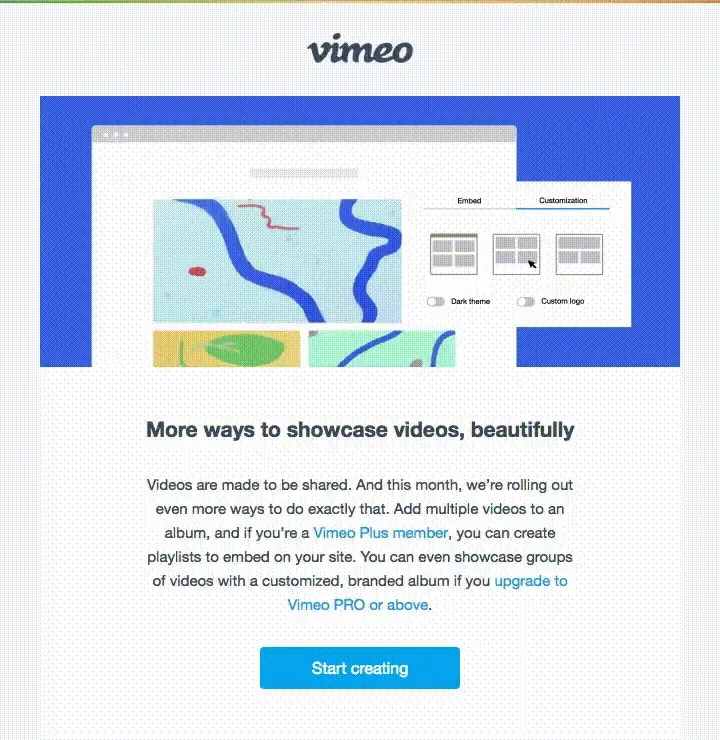Newsletter Marketing
Newsletter marketing proves effective when you receive an email newsletter that triggers you to click or subscribe or brings a smile to your face. The channel provides personal connections while delivering messages directly to inboxes and maintains effective growth capabilities. The following explanation provides a detailed glossary definition of newsletter marketing along with its operational principles and effective methods for creating successful newsletter marketing strategies.
What is Newsletter Marketing?
Sending scheduled email newsletters to those who have signed up for your mailing list and agreed to receive them is what newsletter marketing is all about. The emails contain news updates, product information, promotional offers, and stories to teach and engage with the target audience. The technique keeps your brand in the public eye, builds your reputation as an authority, and encourages people to visit your website and buy from your store.
Simply put, newsletter marketing uses owned, opt-in distribution to build relationships and revenue. It’s a way to deliver relevant information to past and potential customers via their inbox—supporting traffic, sales, and brand credibility.
How Does Newsletter Marketing Work?
At a high level, newsletter marketing follows a repeatable workflow:
- Collect permission-based subscribers. Visitors exchange their email address for value (e.g., a discount, guide, or insider updates). Many teams use double opt-in—a second confirmation step that verifies the address and interest—to improve list quality and reduce bounces.
- Create and design the newsletter. You plan email content matched to your customer profile and goals, choose a newsletter template, and build the send in an email service provider (ESP). If you’re just starting, proven platforms and pre-made templates simplify setup.
- Send on a consistent schedule. Decide a sending frequency (weekly, bi-weekly, monthly) and stick to it. Consistency helps train engagement and improves inbox placement over time.
- Track and optimize. Measure open rate, click-through rate (CTR), conversion rate, unsubscribe rate, bounce rate, and revenue metrics. Iterate on subject lines, CTA placement, personalization, and user segmentation to lift performance.
Don’t forget compliance and email deliverability basics: include a physical address and an easy unsubscribe, and follow CAN-SPAM/GDPR rules to stay out of the spam folder and protect sender reputation.
Benefits of Newsletter Marketing
One reason newsletter marketing remains popular is simple: it works. If you do it right, people actually open your emails and click through. If you don’t, they’ll delete them in two seconds.
Traffic that keeps flowing
A well-structured newsletter campaign funnels readers to articles, product pages, and landing pages via clear call-to-action (CTA) links. Because subscribers opted in, they’re primed to click—driving reliable, compounding site traffic over time. Indeed explicitly notes newsletters as an effective lever for boosting website views.
Conversions without the hard sell
Nobody likes pushy sales emails. A good newsletter marketing strategy mixes helpful content with offers so that when you finally pitch, it doesn’t feel forced. Readers trust you more, which makes them more likely to buy.
Why people stick around
The real purpose of newsletter isn’t discounts—it’s building a brand people remember. Share know-how, quick wins, even small stories. Over time, that trust turns into loyalty and repeat purchases.
Your list is your asset
Social media reach can vanish overnight. An email list doesn’t. Growing it slowly but steadily gives you a base you control. And when you use it for a newsletter campaign, you’re not renting attention—you own it.
Challenges of Newsletter Marketing
List Building Takes Time
High-quality lists are earned, not bought. Building an engaged base requires patience, compelling value, and consistent visibility, and double opt-in can slow raw growth while improving data quality.
Ease of Deletion & Content Fatigue
Inboxes are crowded; a ho-hum subject line or thin content can lead to quick deletion, lower subscriber engagement, and rising unsubscribe rate. Keeping content concise, helpful, and genuinely interesting is non-negotiable.
Deliverability & Compliance Risks
Skipping compliance (missing unsub link, unclear sender details) or sending to unverified addresses risks poor deliverability and spam folder placement. HubSpot’s primer highlights the importance of CAN-SPAM and GDPR compliance, plus clear unsubscribe options and a valid postal address.
How to Create a Newsletter Marketing Plan
1. Build/Expand Your Email List
Make the value explicit at every signup touchpoint: on-site forms, checkout opt-ins, gated content, and social. Offer lead magnets that align with the purpose of newsletter—insights, templates, or early access. Use double opt-in to validate each email address and protect list hygiene. Start early, because not every subscriber will open every send; volume plus relevance matters.
2. Set Clear Goals and KPIs
Tie newsletter goals to business outcomes: traffic targets, trial starts, or revenue. Then pick the right KPIs—open rate, CTR, conversion rate, bounce rate, and unsubscribe rate—and monitor them by segment and campaign. For example, Mailjet lays out a KPI framework that maps company objectives (e.g., new unique visitors) to newsletter metrics (e.g., CTR targets). For financial tracking, go beyond top-line revenue to profitability metrics such as return on sales when your data systems support it.
3. Create Valuable Newsletter Content
Plan an editorial arc that solves real problems. Align topics with your customer profile and lifecycle stage; use user segmentation (behavioral, demographic, or product interest) to deliver more relevant stories. Layer in personalization (name tokens, dynamic modules) and ensure each email has one primary CTA. Choose a platform and newsletter template that support responsive, scannable layouts; short, clear copy often boosts CTR.
4. Design and Format Your Newsletter
Use responsive design and mobile optimization so the email renders cleanly across providers and devices. Keep layouts airy, with obvious hierarchy, tappable buttons, and alt text for images. BigCommerce’s checklist emphasizes uncluttered formats, mobile responsiveness, and a straightforward unsubscribe—elements that improve readability and reduce friction.
5. Schedule Consistently and Send
Pick a sending frequency that matches your content cadence and reader expectations; then test timing and volume. Lock a regular schedule and optimize send time by experimenting until you see a stable uplift in opens and clicks. Over time, consistency conditions readers to expect—and engage with—your newsletter campaign.
Newsletter Marketing Best Practices
Segment and Personalize to Lift Relevance

Start with user segmentation (e.g., by product category viewed, lifecycle stage, location) and add personalization to subject lines and modules. This combination raises engagement, keeps content out of the spam folder, and supports better email deliverability signals.
Write Compelling Subject Lines and CTAs
Your subject line gets the open; your CTA drives the click. Keep subjects specific (benefit + curiosity), test lengths and preview text, and ensure the CTA is action-oriented and visually prominent. Don't hesitate to test and include plain-text fallbacks for reliability.
Design for Mobile and Accessibility

Use responsive design, large tap targets, and concise sections. Avoid image-only layouts and ensure legible contrast. Today mobile responsiveness is a baseline requirement for modern newsletters.
Test, Measure, and Iterate
Adopt A/B testing for subject lines, hero blocks, and CTA placement; roll out winners to the rest of the list. Track open rate (directional after privacy changes), prioritize CTR and conversion rate, and watch bounce rate and unsubscribe rate for early warning signals.
Protect Deliverability and Stay Compliant
Your ESP needs to implement SPF/DKIM/DMARC authentication for domain verification while you should remove unresponsive newsletter subscribers and use double opt-in verification for new subscribers to minimize hard bounces. Your email campaign will stay healthy and your brand will maintain trust when you add visible unsubscribe links and sender information and follow GDPR compliance in relevant cases.
Pace Your Frequency and Set Expectations
Make the purpose of newsletter explicit on your signup page (what you’ll send and how often). Then meet that promise. Too many emails can spike unsubscribes; too few and you lose momentum. Define timing and cadence as part of a holistic newsletter marketing strategy so readers (and inbox providers) know what to expect.
Align With the Rest of Your Funnel
The newsletter serves as a tool to promote blog content and product releases and webinars while maintaining consistent messaging across paid advertising and social media platforms. The newsletter functions as an owned media platform which drives customer retention and enables businesses to sell additional products to their customers. The evaluation of business impact requires tracking both campaign-level ROI and downstream metrics including LTV and return on sales over time.
Final Thoughts
People pay attention to newsletter marketing because you ask for their permission, give them something useful, and then you can sell. When you add clear goals and constant testing to your email campaign, it becomes a compounding growth asset. This is because you combine important things like clean list growth, smart segmentation, crisp personalization, and mobile-first design. Start with something little, keep doing it, and adjust things as you go. That's the most crucial aspect of a long-term newsletter marketing strategy and the greatest method to persuade people to look forward to getting your letters.
Join Our Blog Newsletter!
Stay updated with our latest email marketing tips, product news and case studies.
Terms in the same category